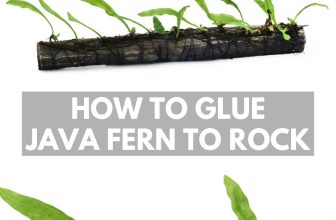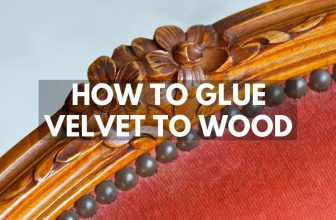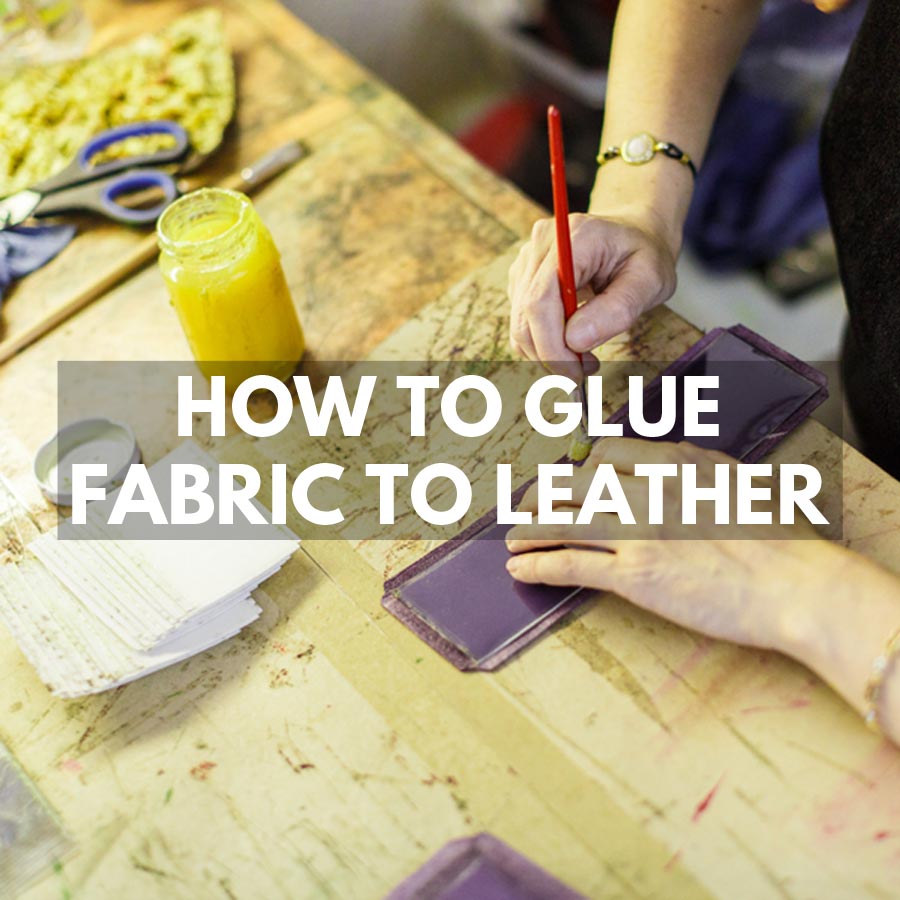
How to Glue Fabric to Leather
Any seamstress or DIY crafter will know how to glue fabric to leather using selected adhesives meant for specific applications. The issue of flexibility and long-term adhesion can also be a huge concern if these two materials need to last a long time using fabric glue that is water-based polyurethane or ones with added solvents.
Static decorative items that aren’t going to handle much stress or movement are just fine for leather glue if polyvinyl acetate is chosen. This article can give a clear definition of which glue will be best for gluing leather to fabric. Each of these adhesive choices has similarities that will work for a variety of projects.
Using this guide also helps to determine if one or more of these adhesives should be used on a project involving leather and fabric. As usual, the method for application and speeding up the drying process helps to give a better idea of how these adhesives will work.
What Glue Can You Use for Fabric to Leather?
There are a number of different glues you can use on both fabric and leather which will create a strong bond between the two different materials. here are three of the top choices:
Fabric Glue
Fabric glue happens to come in a variety of brands that all work to adhere fabric to fabric. This glue is often water-based polyurethane that will bond leather to most fabrics. As long as these fabric materials are not synthetic such as polyester, the bond will work just fine. This glue comes in a squeeze bottle or tube depending on how much adhesive is required. The color of this glue is milky white but will dry to a transparent cleat color when dry.
It will take no less than 24 hours for this glue to totally dry and will be better if light heat is applied to speed up the process. Because this glue is non-toxic, it will clean up with simple soap and water. It has a very low if no smell at all because there are no solvents used in this polyurethane formulation.
Contact Polyurethane
This is also polyurethane-based glue which has solvents mixed within to act similar to what contact cement does. This type of glue works to form permanent adhesion between fabric and leather and is highly flexible. This glue also will appear milky colored or partly cloudy and will dry to become nearly transparent when cured. This type of adhesive requires wearing rubber gloves since it contains solvents.
It’s advised to use this adhesive in areas where adequate ventilation is present so avoid getting high from fumes that result in a headache. It will dry faster after the solvent has evaporated, and dries completely in 24 hours.
Leather Glue
Leather glue is often an adhesive that contains polyvinyl acetate with very low VOCs and is water-based. This type of glue adheres to many fabrics to leather but is the weakest of the glues that are good for temporary bonds. This glue will also wash off skin surfaces very easily and doesn’t require wearing gloves. This adhesive is best when there is very little flexibility for bonding fabric to leather.
The glue itself is cloudy white and dries to a transparent but not completely clear unless it is spread very thinly. This type of adhesive is compared to Elmer’s glue but will appear in a variety of names that use polyvinyl acetate as the primary ingredient. It can take up to 24 hours to totally dry unless heat is introduced.
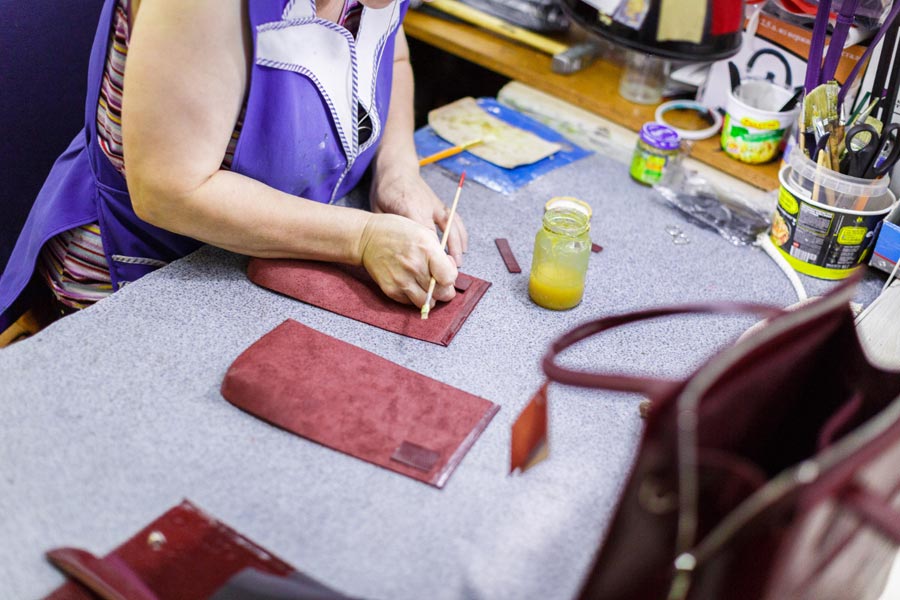
How to Prepare Fabric and Leather Before Gluing
There isn’t much that is needed to prepare fabric before applying glue to the surface. It should be a clean fabric with no surface oils and should be completely dry. Leather also should be clean and dry, however, the surface of leather should be slightly scuffed with 250-grit sandpaper so the adhesive has a bit more bite into the surface. If the leather has fabric glued to the surface that’s been treated, it also needs to be scuffed up.
Where adhesive is being applied, use a small X-acto blade to scratch very small areas, so they don’t interfere with tanned coatings or added stains.
How to Apply Glue for Fabric to Leather
As most of the fabric glues come in a squeeze bottle or tube, they will be easy to apply in a small bead. For more coverage, more of the adhesive should be squeezed out and spread with a pop stick or similar spatula. If the glue is non-toxic, then it can be spread using an index finger and wiped off using a baby wipe or paper towel. For anything that has solvents within the adhesive, using rubber gloves is strongly advised.
As most of these adhesives will be easy to see where they are applied on darker fabrics, the white color of this glue is hard to spot on white fabrics. Be sure to use an adjustable lamp so beads or strips of adhesive are easier to spot from their shadows on fabric and leather.
How to Cure Fabric and Leather Glue
It goes without saying that a warm room is always best for helping to dry any kind of fabric glue. Solvent-based polyurethane glue will dissipate faster to provide a contact cement adhesion that takes minutes rather than hours to totally cure. There is always the issue of post-curing after any of these glues appear dry, so placing an item in a warm room (75 degrees Fahrenheit or higher) for 24 hours will ensure a better bond overall.
There is no need to clamp leather to fabric or vice-versa since the pressure between these surfaces may lead to bleeding. This will be especially apparent if the fabric is very thin such as ribbon or thin lace.
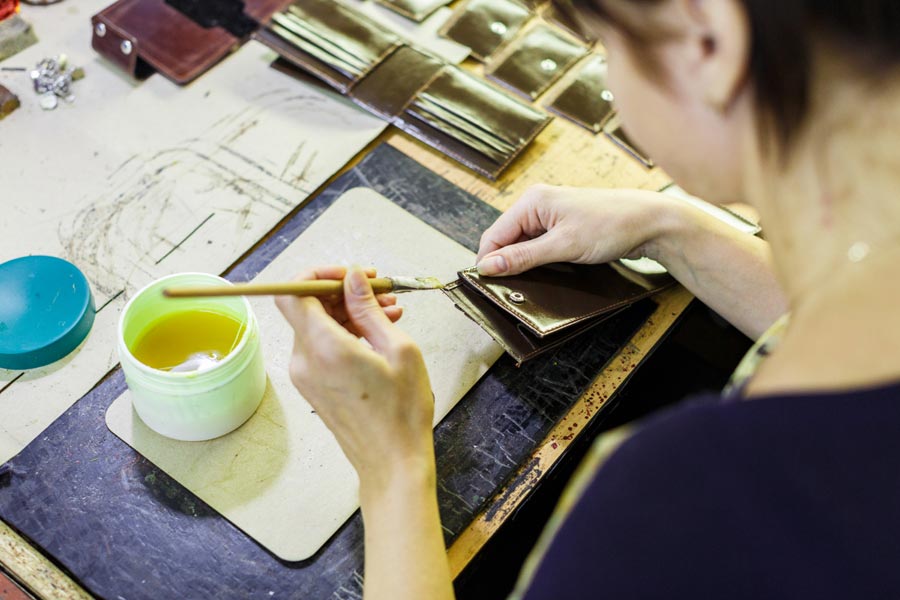
Which is the Best Glue to Use?
Fabric glue with water-based polyurethane is great for long-term adhesion where items are allowed to dry at their own rate. The glue will dry faster if these items are in a warm room, but most importantly this type of glue is non-toxic (for the most part) to work with. When the adhesive has solvent added, this also is good for long-lasting bonds where durability is required and there is a lot of flexing involved.
Leather glue is fine when items that are glued are for show only and there is no need for handling or long-term adhesion. This isn’t the best choice for being the most flexible and will work as a last-minute solution. These types of glue are preferred by those who are concerned about the toxic effects if young kids are using this product. Even for crafters or hobbyists, this glue is an excellent choice for an all-purpose adhesive that suits items that are just for show.
We hope you found this guide on How to Glue Fabric to Leather useful and are no longer stuck for ideas.








